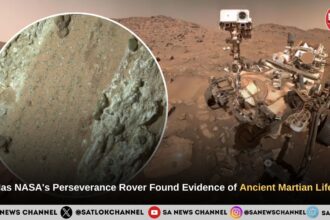From the finding of fire to the development of the internet, scientific progress has shaped the foundation of human society. These breakthroughs didn’t just solve problems — they changed what was possible. They cured diseases, connected continents, and introduced completely new fields of thought and discovery. Without the scientific curiosity of past generations, our modern world would look very different — missing electricity, computers, and space exploration.
- From Curiosity to Breakthroughs
- Landmark Scientific Discoveries Across Eras
- Ancient Insights and Early Innovations
- Renaissance and Enlightenment Breakthroughs
- Modern Scientific Revelations
- Inventions That Revolutionized Daily Life
- The Future of Scientific Discovery
- Spiritual Reflection on Scientific Discoveries
- FAQs – Greatest Scientific Discoveries and Inventions
- Q1. What are the most important scientific discoveries in history?
- Q2. Which inventions had the biggest impact on human life?
- Q3. How have scientific inventions improved human health?
- Q4. What is the difference between a scientific discovery and an invention?
- Q5. How did the internet revolutionize communication?
Science has consistently been humanity’s strongest tool for comprehending and altering the environment around us. Every significant breakthrough, whether by chance or intention, has expanded the limits of knowledge and cleared the path for new concepts, industries, and lifestyles. But which discoveries and inventions have truly altered the world in deep, enduring ways?
In this blog, we will delve into some of the most remarkable scientific accomplishments throughout history — from ancient discoveries to modern technological advancements — and investigate how they still affect our lives today.
From Curiosity to Breakthroughs
At the heart of every major scientific breakthrough is a fundamental question: What if? From Newton contemplating gravity beneath an apple tree to Marie Curie exploring the enigmatic glow of radium, significant progress frequently starts with a sense of wonder. This natural human urge to comprehend our surroundings has resulted in the unraveling of DNA, the utilization of electricity, and the exploration of the cosmos.
Science flourishes when curiosity is paired with experimentation. Every discovery is built on hundreds of years of trial, error, observation, and improvement. These innovations typically do not occur in a vacuum but emerge from the exchange of ideas, worldwide teamwork, and resilience in the face of setbacks. They demonstrate that even the most groundbreaking concepts often originate from simple questions about the unknown.
Why Documenting Discoveries Matters
Scientific discoveries are not isolated events. Without proper documentation, the knowledge acquired can easily fade away, be misunderstood, or unnecessarily repeated.
Recording discoveries helps preserve ideas, allowing them to be built upon and shared across generations and borders. It also provides context—helping us grasp not only what was discovered but also how and why it mattered.
Additionally, documentation ensures that those who made the discoveries receive credit. Throughout history, many innovators—particularly women and marginalized scientists—have had their contributions ignored or misattributed. By thoroughly documenting scientific advancements, we promote accuracy, recognition, and accountability. Most importantly, it motivates future generations to keep seeking knowledge, knowing their efforts will be acknowledged and meaningful.
Landmark Scientific Discoveries Across Eras
Scientific progress is not a sudden leap—it’s a continuum, built brick by brick across generations. From ancient inventions that laid the foundation for civilization to the mind-bending discoveries of modern physics, each era of human history has contributed uniquely to our understanding of the world. Let’s explore how science has shaped humanity across different periods.
Ancient Insights and Early Innovations
Before the formalization of the scientific method, early humans used observation, experimentation, and intuition to make sense of their environment. These early discoveries formed the bedrock of many modern scientific disciplines.
The Wheel and Early Metallurgy
The invention of the wheel around 3500 BCE revolutionized transport, agriculture, and engineering. It wasn’t just a mechanical feat—it was a conceptual breakthrough in motion and design. Equally transformative was early metallurgy. Civilizations in the Bronze Age learned to extract and alloy metals like copper and tin, leading to the development of stronger tools, weapons, and trade systems. These technologies spurred societal growth and laid the foundation for engineering and materials science.
Geometry and Astronomy in Ancient Civilizations
Ancient Egyptians used geometry to measure land and construct pyramids with astonishing precision. Meanwhile, Babylonians and Mayans made early astronomical charts, predicting celestial events and developing calendars still admired for their accuracy. These achievements reflect how early humans observed the cosmos and applied mathematical principles to solve real-world problems.
Renaissance and Enlightenment Breakthroughs
The Renaissance and Enlightenment periods saw a dramatic resurgence in scientific inquiry, driven by a desire to question authority and explore the natural world through reason, observation, and experimentation.
Newton’s Laws of Motion
Sir Isaac Newton’s formulation of the laws of motion and universal gravitation in the 17th century marked a turning point in physics. These laws not only explained planetary orbits but also provided the foundation for classical mechanics—used for centuries in engineering, astronomy, and navigation. Newton’s research brought together the sky and the Earth under the same physical laws, changing our perspective of the universe.
Also Read: Scientific Experiments: Meaning, Types, Methods, and Real-Life Applications
The Microscope and Cellular Discovery
The microscope was invented in the late 16th century, revealing a whole new world that was invisible to the naked eye. Pioneers like Robert Hooke and Antonie van Leeuwenhoek observed cells, bacteria, and other microorganisms, setting the stage for modern biology and medicine. This breakthrough shifted science from macroscopic observation to microscopic understanding.
Modern Scientific Revelations
The 20th and 21st centuries have seen an explosion of scientific knowledge, marked by paradigm shifts that continue to redefine our understanding of life, matter, and the universe itself.
DNA Structure and Genetic Engineering
The discovery of the double helix structure of DNA by James Watson and Francis Crick in 1953 was a milestone in molecular biology. It unraveled the mechanism of genetic inheritance and opened doors to genetic engineering, biotechnology, and personalized medicine. Today, CRISPR gene editing technology builds on this discovery, enabling precise modifications to DNA that could cure genetic diseases and revolutionize agriculture and medicine.
Quantum Mechanics and Relativity
Einstein’s theory of relativity and the development of quantum mechanics in the early 20th century shattered classical physics’ limitations. While relativity explained the large-scale structure of spacetime, quantum mechanics revealed the bizarre and probabilistic nature of particles at subatomic scales. These theories not only changed how we understand time, space, and matter but also paved the way for technologies like GPS, lasers, semiconductors, and quantum computing.
Inventions That Revolutionized Daily Life
Science isn’t just confined to labs or space stations—it touches every aspect of our daily lives. From how we communicate and travel to how we treat illness and generate energy, scientific inventions have reshaped human behavior, economies, and cultures. This section highlights some of the most transformative technologies that have seamlessly integrated into modern life.
Communication and Connectivity
Human connection has always driven innovation, and the technologies that enable us to share information have grown exponentially in their impact.
The Telephone and Internet
The invention of the telephone by Alexander Graham Bell in 1876 marked a turning point in human communication. For the first time, people could speak to each other across great distances instantly. Fast forward to the late 20th century, and the Internet took connectivity to a whole new level. It transformed how we access information, work, shop, learn, and socialize—creating a digital world where global communication is instantaneous and nearly limitless.
Satellites and Wireless Technology
Satellites enabled global broadcasting, weather forecasting, GPS navigation, and real-time data sharing across continents. Meanwhile, the rise of wireless technologies like Wi-Fi and mobile networks untethered us from cords and cables, ushering in the era of smartphones and smart devices. These inventions have not only enhanced convenience but have become critical for disaster response, remote learning, telemedicine, and more.
Medical and Health Innovations
Advancements in medical science have drastically increased life expectancy and improved quality of life. Many diseases that once decimated populations are now preventable or treatable thanks to scientific invention.
Vaccines and Antibiotics
Vaccines have played a vital role in eradicating or controlling deadly diseases such as smallpox, polio, and measles. Antibiotics, first discovered by Alexander Fleming in 1928, revolutionized the treatment of bacterial infections and transformed modern medicine. These innovations have saved countless lives and remain essential tools in global public health.
MRI and Robotic Surgery
The invention of Magnetic Resonance Imaging (MRI) brought unprecedented insights into the human body, allowing doctors to diagnose conditions with precision and without invasive procedures. Robotic surgery, meanwhile, has made operations more accurate and less traumatic, leading to faster recovery times and reduced complications. Together, these technologies represent the marriage of engineering, computing, and medicine.
Energy and Transportation
As civilizations evolved, so did their need for better energy sources and modes of transportation. Innovations in these areas have dramatically reshaped economies and the environment.
Steam Engine to Electric Vehicles
The steam engine was the backbone of the Industrial Revolution, powering factories, trains, and ships. Later, the internal combustion engine gave rise to automobiles and global mobility. Today, electric vehicles (EVs) represent the next frontier—offering cleaner, more efficient alternatives to fossil fuel-powered transport, with growing infrastructure and innovation pushing them into the mainstream.
Solar Panels and Nuclear Power
Solar energy has become a beacon of sustainability, turning sunlight into clean electricity and offering decentralized energy solutions even in remote areas. On the other hand, nuclear power provides a high-output, low-carbon energy option that supports large-scale infrastructure. Both inventions reflect the ongoing scientific quest to meet global energy demands without compromising the planet’s future.
The Future of Scientific Discovery
While history is filled with groundbreaking discoveries and inventions, the most exciting scientific revolutions may still lie ahead. As we stand on the brink of a new era, emerging fields and frontier technologies promise to reshape the world in ways we can scarcely imagine today. The future of science is no longer just about understanding nature—it’s about engineering new realities.
Emerging Fields and Frontier Technologies
From decoding the human brain to colonizing other planets, science is expanding into bold, uncharted territories. These new frontiers combine disciplines like biology, physics, computer science, and engineering to tackle the grand challenges of our time.
Artificial Intelligence and Machine Learning
Artificial Intelligence (AI) and Machine Learning (ML) are already transforming industries—from healthcare and finance to transportation and education. In the coming decades, AI is expected to become even more integrated into decision-making, automation, personalized medicine, and scientific research itself. For example, AI is now being used to accelerate drug discovery, predict climate trends, and even assist in creative fields like writing and design. The ethical and societal implications of AI will be just as significant as its technical capabilities, making it one of the most watched and debated scientific frontiers.
Space Exploration and Quantum Computing
The new space race is no longer just about reaching the Moon—it’s about long-term human presence on Mars, mining asteroids, and exploring deep space. Private companies and national space agencies alike are developing reusable rockets, space habitats, and interplanetary missions. At the same time, quantum computing is set to revolutionize our ability to process complex data. Unlike traditional computers, quantum machines can perform parallel computations at incredible speeds, unlocking new possibilities in cryptography, materials science, and artificial intelligence.
Spiritual Reflection on Scientific Discoveries
While science has undoubtedly transformed human life through inventions and discoveries, Sant Rampal Ji Maharaj explains that true knowledge (Tatvagyan) goes beyond understanding the material world — it reveals the purpose of human life and the path to liberation. Just as curiosity drives scientific progress, spiritual ignorance compels us to ask: Who created this vast universe, and why are we here?
Science explores creation; spirituality identifies the Creator — Supreme God Kabir Sahib, who resides in Satlok, the eternal realm beyond the reach of technology or space travel. While science treats diseases and enhances comfort, it cannot free the soul from the cycle of birth and death. Only through Naam Diksha (spiritual initiation) from a Tatvadarshi Sant, like Sant Rampal Ji Maharaj, can one attain salvation.
Even discoveries like DNA and quantum mechanics hint at a deeper design — not random, but divinely governed. The future of humanity lies not only in AI, space exploration, or genetic engineering but in recognizing that the ultimate truth lies in Satbhakti, the true worship of God, as guided in holy scriptures.
Science answers how, but only true spiritual knowledge reveals why.
FAQs – Greatest Scientific Discoveries and Inventions
Q1. What are the most important scientific discoveries in history?
Some of the most important discoveries include the laws of motion and gravity by Newton, the theory of evolution by Darwin, the structure of DNA by Watson and Crick, and the germ theory of disease by Pasteur.
Q2. Which inventions had the biggest impact on human life?
Inventions like the wheel, printing press, electricity, telephone, internet, and vaccines have revolutionized daily life and reshaped society on a global scale.
Q3. How have scientific inventions improved human health?
Medical innovations such as antibiotics, vaccines, X-rays, MRI scans, and surgical techniques have drastically improved diagnosis, treatment, and life expectancy.
Q4. What is the difference between a scientific discovery and an invention?
A discovery reveals something that already exists in nature (e.g., gravity), while an invention is a human-created tool or process (e.g., the light bulb).
Q5. How did the internet revolutionize communication?
The internet allowed for instant global communication, information sharing, and connectivity, transforming industries such as education, commerce, media, and healthcare.









